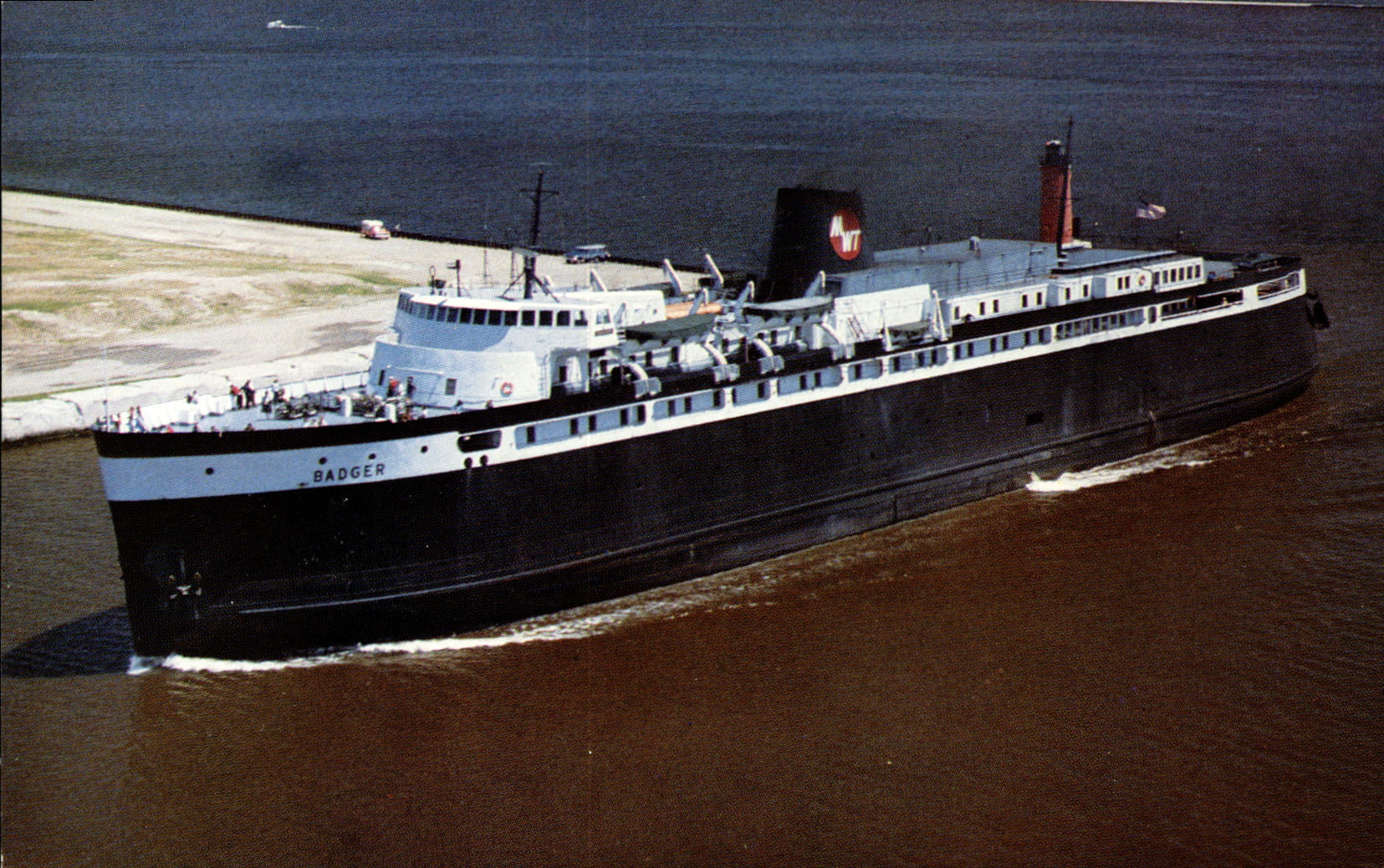Transportation Library holdings link humans, history, and the environment
On its maiden voyage across Lake Michigan, the SS Badger ferried passengers, autos, roll-on/roll-off freight cars, and, as a festive flying banner declared, a “solid shipload of beer from Milwaukee, Beer Capitol [sic] of the World.” The year was 1953, and Great Lakes steamship transportation was in its heyday.
Less than a quarter century later, such ferries would become a dying breed. The three railway companies that still operated the service across Lake Michigan were preparing to abandon the Badger and other ships like it. That’s when the Interstate Commerce Commission, a federal regulatory agency, mandated an environmental impact statement, or EIS.
EISs hold a near-legendary status among engineers, historians, and environmentalists—as well as their respective supporters and challengers. Since the 1969 National Environmental Policy Act, thousands of federally mandated EISs have been produced to determine how, from every angle, proposed infrastructure changes—such as building new highways or dams or eliminating coal-burning ferries on the Great Lakes— could affect people and the environment.
In this way, each EIS becomes a unique, voluminous record of how people and the environment interact, said Rachel Cole, interim head of Northwestern’s Transportation Library, which holds the largest collection of EISs in the nation. “Because EISs are so holistic, they reveal more than just the facts about a single infrastructure project; they can contain information that you might not find elsewhere,” she said.
In 1976 an EIS looked at how cessation of coalburning ferry service on the Great Lakes could affect air and water quality, traffic density in Chicago rail hubs, regional employment figures, and even tourism in affected harbor towns. As with every EIS, the public commentary was recorded in the final report, capturing a sampling of local attitudes.
An EIS doesn’t make a recommendation, Cole said. Rather, it lays out its findings, including alternative options, for policymakers to base their decisions on. In the case of the Badger, greatly reduced service continued until the 1980s, while most of the other railway ferries were allowed to cease operation. (The Badger eventually resumed operation under private ownership as a car ferry between Ludington, Michigan, and Manitowoc, Wisconsin.)

Detail of a map from the 1904 Pere Marquette Railway annual report showing contemporary ferry routes
The Transportation Library’s EIS collection began with a 1992 donation of 20,000 printed EISs from political science professor H. Paul Friesema, whose work contributed to the founding of the University’s Environmental Policy and Culture Program. Today the library holds 33,000 EISs in print, microfilm, and digital formats; many of the physical reports were digitized by Google and placed in HathiTrust, a publicly accessible digital preservation repository.
EISs reveal fascinating slices of human activity that intersect with every federal agency, from NASA to the national parks, Cole said. For example, she cited a southern Illinois community that experienced a rise in flooding in the aftermath of a highway project; an environmentalist group consulted the relevant EIS to see whether this consequence had been anticipated. A student recently sought an EIS to see if public transportation options had been considered as alternatives to a Seattle highway project.
Keith Woodhouse, associate professor of history in the Weinberg College of Arts and Sciences, studies American environmental history and uses EISs in his research. Students in his research seminar on American energy policy consult EISs as part of their class projects. Woodhouse calls EISs from 1980 to the present an “absolutely vital” source of information for his current research on California desert regions administered by the Bureau of Land Management.

A 1977 volume of the environmental impact statement analyzing the cessation of ferry service on Lake Michigan
Woodhouse conceded that EISs are sometimes “the butt of jokes about frustrating and pointless red tape,” though that assessment can cut both ways. Activists can use EISs to torpedo, say, a construction project that would displace a community; on the other hand, EISs can slow down projects that environmentalists would like to accelerate, like windmill farms or walkable urban neighborhoods.
Still, EISs have proven so successful at capturing the nuances of complex decision making that many countries around the world have created their own versions of the process.
Ultimately, EISs have a democratizing effect, allowing people from all walks of life, no matter their means, to participate in decisions that affect their lives, Woodhouse said. For instance, without EISs, a group of citizens worried about the effect of a construction project on their local community would have to go out and pay for studies that proved the validity of their concerns, Woodhouse said. “And that would effectively render their argument impossible.”
This post originally appeared in the Spring 2023 issue of Footnotes.

